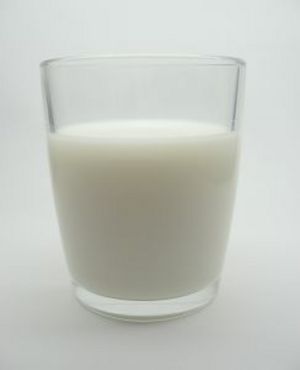The art of the Maya was a reflection of what their society considered important. Mayan art included painting on surfaces such as paper and plaster, carving designs in wood and stone, statues in clay and stucco, and they used terra cotta to build figurines from molds. The Mayans also created small ornaments using metal work. Mayan art reflected the focus of Mayan society, and in this way is a great window into it (http://www.utexas.edu/courses/wilson/ant304/projects/projects98/gaffordp/art.html).
This paper will focus most on the art of the Late Classic period in Mayan civilization.
The art of the Late Classic Maya evolves out of the Early Classic period. They are similar in that there is still little outside influence in the art, but the art was beginning to develop a characteristic introspective style. The art of this time can be compared to the introspective art of Asia and the naturalistic style of Europe and the Mediterranean (Coe 2005).
The most interesting aspect of this time period was the use of portraits which was not used by any other native group at the time. They were the only American Indians interested in capturing the traits of specific people in their art.
Most Maya sculpture was created by carving. They carved with stelae, lintels, and panels. In the Late Classic period, they had truly mastered these materials, and they got away from the rigid way in which they positioned the subjects of their art. In place of the rigid formality came a kind of imbalance among the different parts of the composition. This imbalance does the work of leading the eye along the work in a restless manor (Coe 2005).
Relief carving is believed to have met its perfection with the tablets from Palenque. Especially notable was the Tablet of the Slaves which shows a Mayan official seated upon the backs of two captives. Because the art was over such a wide area, there were apparent specializations among the different areas. Copan specialized in three-dimensional sculpture while Palenque specialized in reliefs done with sophisticated use of lines which were carved and engraved (http://www.utexas.edu/courses/wilson/ant304/projects/projects98/gaffordp/art.html).
The pottery of the Late Classic period constisted of not only pots and pans useful for everyday life, but of works of real art and figurines. Some of the works of art included incense burners which consisted of tall and hollow tubes which were molded with the heads of gods. The burners were even painted with vibrant colors.
Jaina, a small island off the coast of Campeche, was used as a giant cemetery. Buried there were the nobles and rulers of important Mayan cities. Incredible offerings were found within the graves of these nobles and rulers, and these recovered gravesites have been the richest archaeological sites for the sophisticated figurines for which the island is known (Coe 2005).
The figurines appear to be made from molds due to the uniformity of their structure, but they are very individual in the way they are painted. The portrait-like appearance of the figurines suggests that they are painted to look like the inhabitants of the graves. Another possibility is that they are the likenesses of the deities (http://www.utexas.edu/courses/wilson/ant304/projects/projects98/gaffordp/art.html).
The Late Classic period can be specifically recognized for the Mayan discovery of a brilliant blue color which can be seen on the figurines at Jaina. This blue is now the famous Mayan Blue. It is now known that the color was achieved by missing indigo with a special clay and heating the combination. The pigment is highly resistant to light, acids, and time (Coe 2005).
The Mayans whom were potters were able to achieve brilliant colors by firing them at low temperatures. The deep bowls were often used to tell a story, much like the narrative qualities of the cave paintings. These pieces depict death, afterlife, and supernatural beings.
Jade was used often by Mayans in their artistry. It was the most precious substance known to them, and they used it frequently. Jade was traded over large distances. The Jade was worked into important figures often, again, to tell a story of some kind (Coe 2005).
Marble was also used by the Mayan artists of the Late Classic period. Apparently marble was a rare substance. It was used very rarely within the artistry of the time. Some examples of objects made from the marble include a vase of translucent onyx marble and marble vessels from Honduras (Coe 2005).
The Mayans were very skilled at carving. They were capable of using any medium which was available. They used small blades of obsidian which were incised with the gods of the Maya Pantheon (http://www.utexas.edu/courses/wilson/ant304/projects/projects98/gaffordp/art.html).
Most carved art which the Maya created was not of jade and marble, however. Most of the time, the mediums used were wood and woven and painted textiles. Most of these creations, because they were made from perishable materials, could not withstand the test of time within the moist tropical environment (Coe 2005).
Maya art was used not only in graves and ceremonial destinations, but in everyday life. It is likely that the houses and clothing of both nobility and commoner were full of brilliant color and decorative detail.
Looking at the art of the Mayans, it is easy to discern what was important in their culture. First of all, when one looks at Mayan art, one notices many different animals depicted within it. One can notice nearly every animal which was present in the area at the time. Animals were very important to the Mayas due to their uses as food, clothing, and sacrifice to the gods.
Another common occurrence within Mayan art is the images of the calendar. To Mayans, time was a very important aspect of their culture. The Mayans saw time as a cyclical phenomenon. They measured time according to their agricultural practices, and because these aspects of their lives were cyclical, so was everything else in the world to them.
Another common depiction in Mayan art is the ceremony. One can notice easily that much of the art which has survived depicts ceremonies revolving around a monarch of some kind. Generally the monarch is receiving services or praise.
Another common depiction within Mayan art is that of the gods. Many times, gods are depicted as animals. The closeness of the divine with the natural environment speaks volumes about the culture of the Maya. It was very important for them to be in touch with their natural world. Mayans depended on every drop of rain or lack thereof, every animal, and every ray of sunlight to sustain their way of life. It was all-important for them to be in good relations with their animal gods, because they were in control of whether or not the Mayans got to sustain themselves.
Art is an important window into any culture, and the abundance of Mayan art available to analyze leaves us with a perfect view into what was culturally important to them. From animals to kings, the Mayan culture put importance on many different aspects of the world around them. Art is a wonderful analytical tool, and the Mayans are no exception to this truth.
Works Cited
Coe, Michael. 2005. The Maya. Thames and Hudson: New York, NY.
Maya Art. 2006.
http://www.utexas.edu/courses/wilson/ant304/projects/projects98/gaffordp/art.ht
ml. (November 20, 2006).






